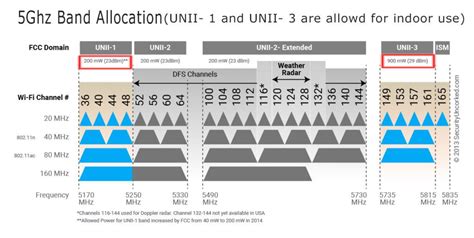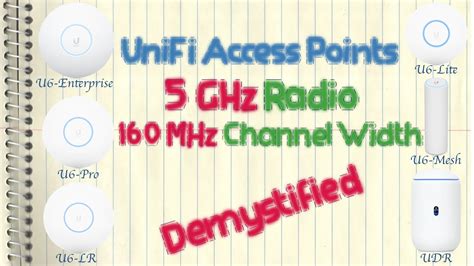unifi chanel width | unifi 5ghz channel width unifi chanel width Narrower channel width generally mean a cleaner, more reliable connection. It should be noted that a station/device can auto-detect 20, 40 and 80 MHz channels by default. 5, 10, 30 and 60 MHz channels must be pre-set on the station side as well. Dây nịt Louis Vuitton. Thắt lưng Louis Vuitton là một phụ kiện có thể được tìm thấy ở đời sống thường ngày và còn là sự lựa chọn của nhiều siêu sao nổi tiếng trên thế giới. Điều gì đã tạo nên một phụ kiện dây nịt chưa bao giờ có dấu hiệu hạ nhiệt ở nhiều thị trường? Hãy cùng iPrice khám phá nhé!
0 · unifi wireless channel width
1 · unifi test wifi speed
2 · unifi set channel width
3 · unifi enable dfs channels
4 · unifi channel utilization explained
5 · unifi best channel width
6 · unifi 5ghz channel width
7 · 5g channel width unifi
Level 50 is the maximum level you can reach on any character before you’ll need to prestige them again. To get to level 50 on either killer or survivor, you’ll need to spend about 1 million Bloodpoints in the Bloodweb.
Narrower channel width generally mean a cleaner, more reliable connection. It should be noted .With 160hz channels in wifi 6, there is only 1 usable channel 36+ at the bottom before DFS .
Increase the channel width to 80 MHz or 160 MHz for each AP's 5 GHz and 6 GHz radio. The 2.4 GHz radio should remain on 20 MHz to avoid excessive interference. Globally configured in the Radios tab, by selecting one or more WiFi bands and choosing your preferred channel width in the Edit Radios panel. Channel Width allows you to set the channel width for each frequency band of your Wi-Fi radios. 20 MHz is the base channel width for modern Wi-Fi, but multiple channels may be bonded together to increase data rates and throughput.
Narrower channel width generally mean a cleaner, more reliable connection. It should be noted that a station/device can auto-detect 20, 40 and 80 MHz channels by default. 5, 10, 30 and 60 MHz channels must be pre-set on the station side as well. With 160hz channels in wifi 6, there is only 1 usable channel 36+ at the bottom before DFS channels and the top channels 120+ are not wide enough to have 1 x 160 hz.Basic Optimization. Begin by following these steps: Set each AP's channel width to 20 MHz for the 2.4 GHz radio and 40 MHz for the 5 GHz radio. Globally configured in the Radios tab, by selecting one or more WiFi bands and choosing your preferred channel width in the Edit Radios panel. A higher channel width provides more wireless bandwidth to your access points. Most access points, including UniFi and other brands, set the channel width to 40 MHz by default. This width yields per-device wireless speeds typically between 250 and 400 megabits per second.
ISP Wireless - Guide to Channel Width Selection. This article discusses advantages/disadvantages to using different channel widths in various deployment scenarios. Introduction. Narrow Channels. Medium Channels. Wide Channels. Responsible Use of .
In general, it’s best to keep the channel width at 40 for the 5 GHz radio. When picking a higher channel width, you basically are stacking the channels together. So when you pick channel 36 with a bandwidth of 40 MHz, then channels 36 and 40 are used.
Then manually set the channel number and max out the channel widths on 5Ghz at 80 and 6 Ghz at 160. This will give you maximum throughout on most devices. Leave 2.4Ghz at 20Mhz as these channels are likely full of interference and you don't need high throughout on . Select all 2.4GHz radios and ensure: Channel Width is set to 20 [MHz]. Transmit Power is set to Medium. Select all 5GHz radios and ensure: Channel Width is set to 80 [MHz]. Transmit Power is set to High. Ensure all radios have their own unique, manually selected channels. For 2.4GHz, alternate between 1, 6, and 11.Increase the channel width to 80 MHz or 160 MHz for each AP's 5 GHz and 6 GHz radio. The 2.4 GHz radio should remain on 20 MHz to avoid excessive interference. Globally configured in the Radios tab, by selecting one or more WiFi bands and choosing your preferred channel width in the Edit Radios panel. Channel Width allows you to set the channel width for each frequency band of your Wi-Fi radios. 20 MHz is the base channel width for modern Wi-Fi, but multiple channels may be bonded together to increase data rates and throughput.
Narrower channel width generally mean a cleaner, more reliable connection. It should be noted that a station/device can auto-detect 20, 40 and 80 MHz channels by default. 5, 10, 30 and 60 MHz channels must be pre-set on the station side as well. With 160hz channels in wifi 6, there is only 1 usable channel 36+ at the bottom before DFS channels and the top channels 120+ are not wide enough to have 1 x 160 hz.Basic Optimization. Begin by following these steps: Set each AP's channel width to 20 MHz for the 2.4 GHz radio and 40 MHz for the 5 GHz radio. Globally configured in the Radios tab, by selecting one or more WiFi bands and choosing your preferred channel width in the Edit Radios panel. A higher channel width provides more wireless bandwidth to your access points. Most access points, including UniFi and other brands, set the channel width to 40 MHz by default. This width yields per-device wireless speeds typically between 250 and 400 megabits per second.
ISP Wireless - Guide to Channel Width Selection. This article discusses advantages/disadvantages to using different channel widths in various deployment scenarios. Introduction. Narrow Channels. Medium Channels. Wide Channels. Responsible Use of . In general, it’s best to keep the channel width at 40 for the 5 GHz radio. When picking a higher channel width, you basically are stacking the channels together. So when you pick channel 36 with a bandwidth of 40 MHz, then channels 36 and 40 are used. Then manually set the channel number and max out the channel widths on 5Ghz at 80 and 6 Ghz at 160. This will give you maximum throughout on most devices. Leave 2.4Ghz at 20Mhz as these channels are likely full of interference and you don't need high throughout on .

unifi wireless channel width
unifi test wifi speed

unifi set channel width
unifi enable dfs channels
unifi channel utilization explained

To remove an inactive logical volume, use the lvremove command. If the logical volume is currently mounted, unmount the volume before removing it. In addition, in a clustered environment you must deactivate a logical volume before it can be removed. The following command removes the logical volume /dev/testvg/testlv from the volume .
unifi chanel width|unifi 5ghz channel width


























